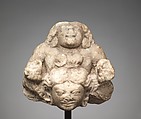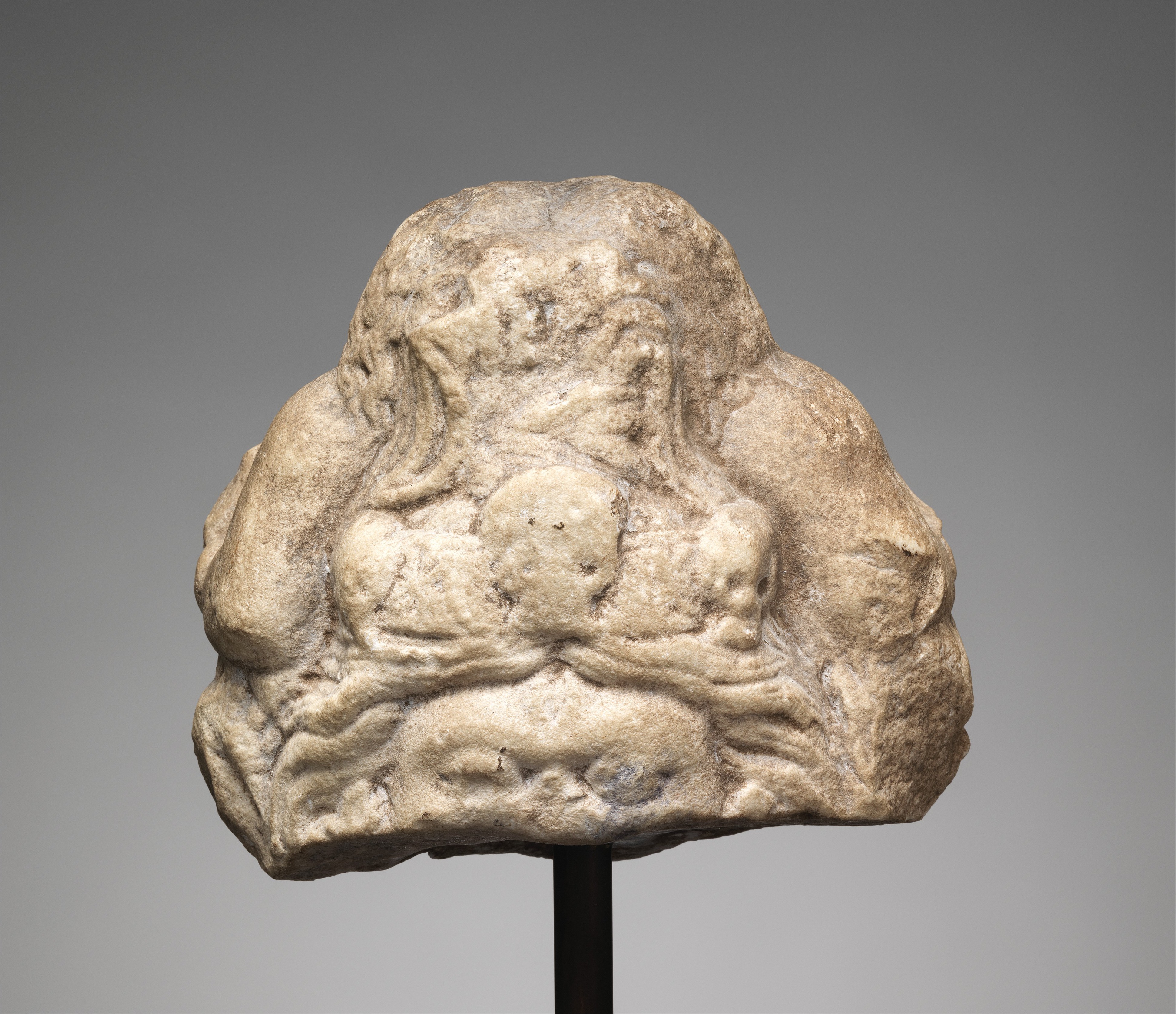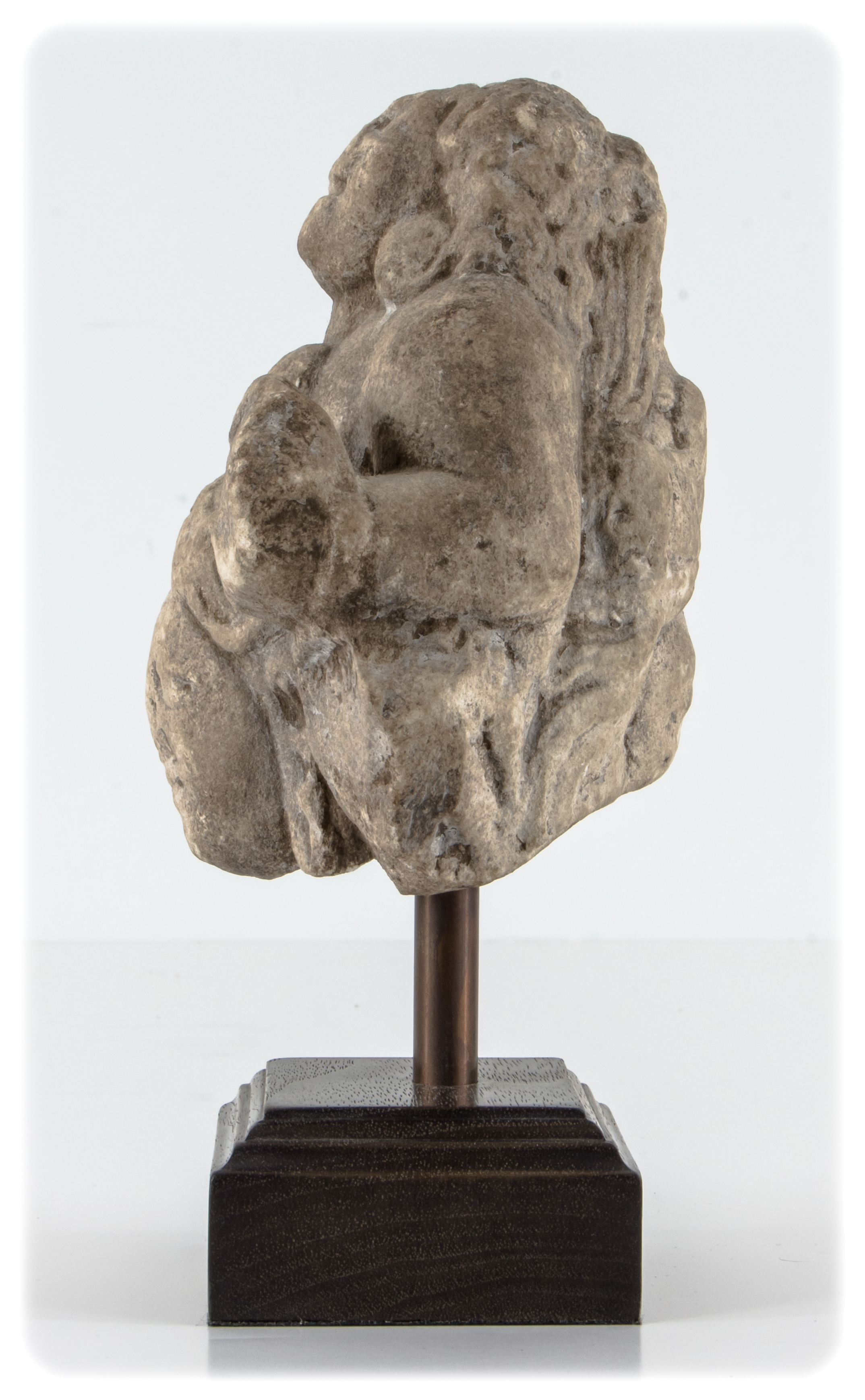Head of Addorsed Maheshvara
Northern Pakistan (Brahmanical post-Gupta)
Not on view
This sculpture depicting Shiva is altogether a more complex and esoteric religious icon. The Head of Addorsed Maheshvara represents Shiva, with braids of hair drawn up into a fanned topknot, again displaying a crescent moon on the chignon and the third eye on the forehead. However, in a rarely represented form, Shiva bears on his shoulders a squatting dwarf-like personage, a gana, grinning wide-mouthed, eyes focused skyward, as if ecstatic in his devotion, perhaps engaged in singing in praise of his Lord. Shiva displays classic 5th–6th century late Gupta features: a rounded fleshy face, cascading locks of hair and large circular earplugs. Though not entirely clear, he appears to hold in each hand a disc and a crescent, presumably intended to represent solar symbols. On the reverse is a grotesque face—a wild and early form of Shiva sometimes identified as Rudra (‘the howler’). This esoteric form of Shiva is rarely found and is confined to the mid–first millennium; a stone sculpture of a standing Shiva with squatting gana astride his shoulders has been identified at the Rang Mahal site in Rajasthan, a region with strong links with the northeast regions in the 7th century.
Due to rights restrictions, this image cannot be enlarged, viewed at full screen, or downloaded.
This artwork is meant to be viewed from right to left. Scroll left to view more.





